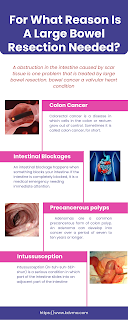Pes Cavus VA Rating And Secondary Conditions Associated With It
A claw foot is a type of human foot in which the sole is noticeably deflated when carrying weight. A high arch is a subtle change to a flat foot and is much less common. Pes cavus is a foot misshape characterized by a tall arch that does not straighten with weight bearing; the deformation can occur in the forefoot, midfoot, rearfoot, or a combination of any of these targets.
What Are The Symptoms Of Pes Cavus?Claw feet have problems - though not in general - finding shoes that fit and may need help from their point of view. Teens with high arches and mobility issues can wear custom insoles that are accessible and made to order in various sizes.
Feet repeatedly report foot pain, leading to a severe performance reduction. The objections described in the article include metatarsalgia, pain under the central metatarsal, plantar fasciitis, painful calluses, and lower leg osteoarthritis.
Several different symptoms are considered to be defined by pes cavus. These include shoe fit issues, laterally long lower leg imbalance, lower appendix stress fractures, knee pain, iliotibial band friction syndrome, back pain, and tripping.
Foot pain in individuals with pes cavus may be primarily due to the accumulation of an abnormal plantar pressure factor, given that the pes cavus is inflexible, insecure, and has a reduced zone of ground contact. There have been reports of a recent association between upper plantar pressure factor and foot pathology in individuals with pes cavus.
VA Rating For Pes Cavus
50%: Significant contraction of the plantar fascia with forefoot drop, hammer toes on all toes, painful calluses, significant varus deformity on both sides.
30%: Significant contraction of the plantar fascia with forefoot drop, hammer toes on all toes, painful calluses, significant varus deformity on one side.
20%: The tendency to dorsiflex all toes, restriction of the right angle in dorsiflexion of the ankle, shortened plantar fascia, and pronounced tenderness under the metatarsal heads.
10%: Some limitations in thumb dorsiflexion, ankle dorsiflexion, marked tenderness under metatarsal heads: bilateral.
0%: Sight.
Pes Cavus May Lead To Secondary Diseases
Some veterans may suffer from pes planus due to their military service. However, if the condition causes another disability, the veteran may receive VA disability help and disability benefits alongside the other state. It is called the secondary service connection. If you're diagnosed with flat feet, your doctor can trace your progress to an injury you sustained during military service.
Examples of conditions that can occur as a result of flat feet may include:
Degenerative disc disease
Plantar fasciitis
Foot arthritis
Back or knee pain
Secondary conditions can affect your overall pes cavus VA rating and can be extremely helpful in getting the benefits you deserve from VA. It is always important to inform the VA of any co-morbidities you may have on top of your primary disability.
Getting Pes Cavus Service-Connected
For veterans to be associated with pes cavus service like any other VA disability, they must demonstrate three things to the VA, which are given below.
A veteran must have a recent medical diagnosis of flat feet. This diagnosis may come from a private practitioner or a VA doctor. The VA medically screens every veteran with pes cavus because every veteran must complete a compensation and retirement exam as part of the application process. If a veteran has not previously been diagnosed with pes cavus by their physician, a VA physician may do so during the veteran's c&p exam.
Any incident or injury during operation: For a service connection to be established, a veteran must have developed pes cavus due to an on-duty incident or working condition that caused the injury. This particular event or setting can often be found and evidenced by a veteran's military medical records, personnel records, and other documents.
A medical nexus connecting the condition to military service: A veteran with pes cavus must also provide a link relating the current disability to the service. The VA must see a demonstrable connection between your case of pes cavus and your military service. VA refers to this connection as a port as you are not entitled to a pes cavus VA rating and disability benefits without a link.
If a veteran can prove all three aspects in their claims, they should get a pes cavus VA rating and compensation for a flat foot. Obtaining approval for disability benefits from the VA means finding a demonstrable link between your disability and military service and proving that your condition is significantly disabled. Once the VA has all the symptoms it needs to verify your claim, you can begin receiving monthly tax-free benefits.
.jpg)


Comments
Post a Comment